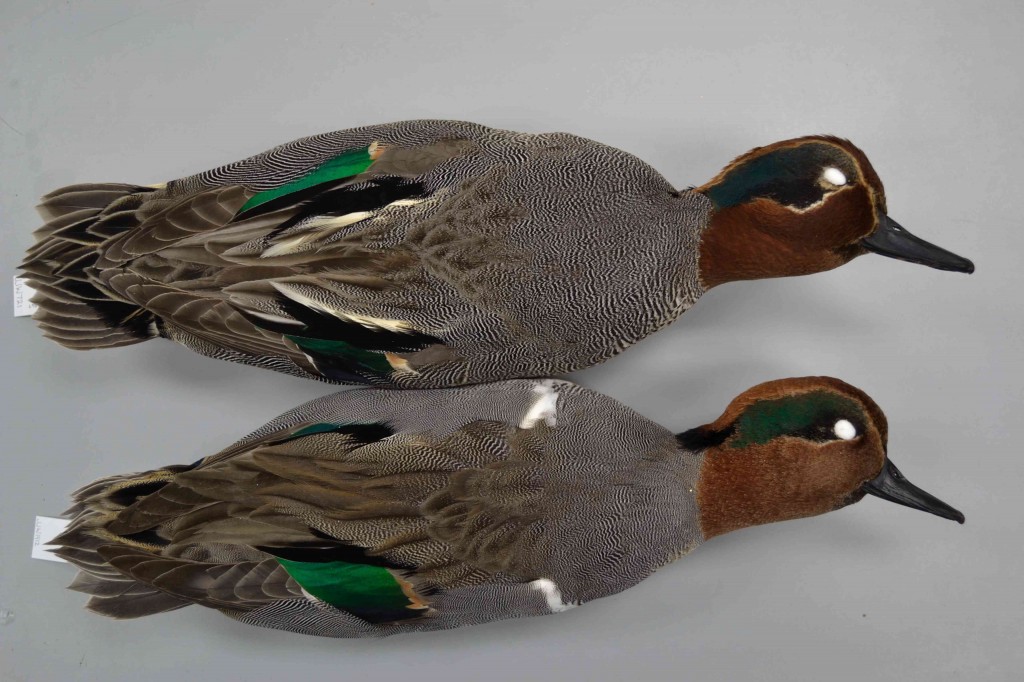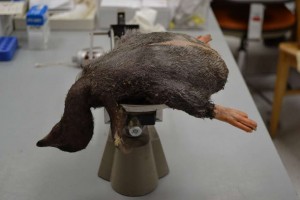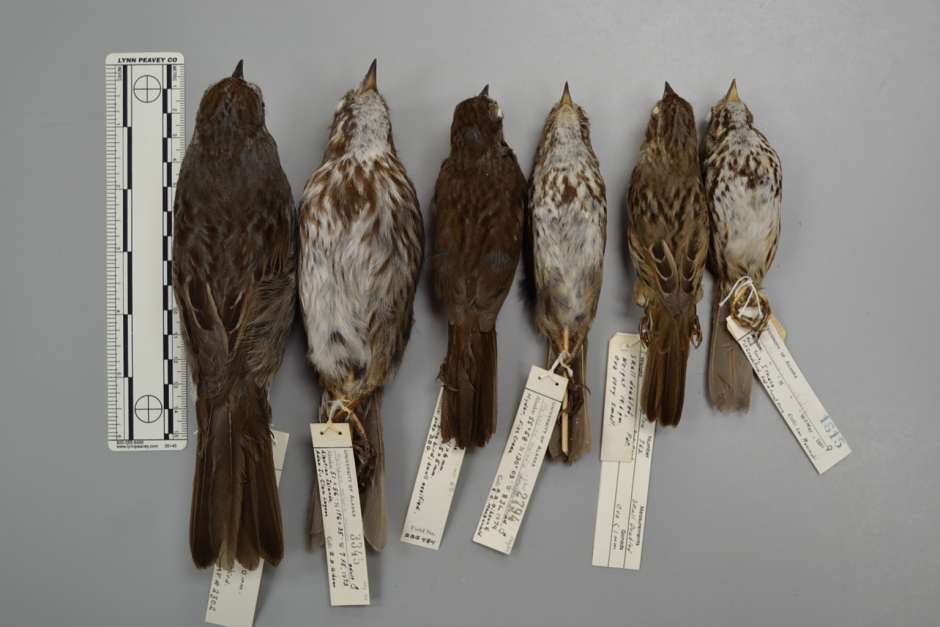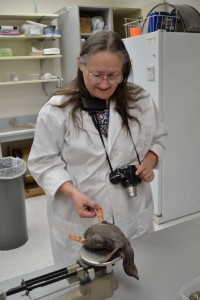A recent opinion paper in Science by a group of authors more concerned with human ethics than with science and biodiversity used a rather broad brush to paint scientific collecting in a negative light. Perhaps through their lack of intimate familiarity with biodiversity science, they made a number of errors in their effort to urge field biologists to stop collecting voucher specimens. Setting aside the issue of why a prestigious journal like Science would publish what is a rather weak contribution, the appearance of this piece does provide an opportunity to again help people understand why scientific collecting is important, why it does not pose a threat to populations of wild organisms, and why in a time of global change adding specimens to collections is now more important than ever. There is a substantial body of peer-reviewed literature on this topic; I will just summarize some of the main points here.
Scientific collecting is important in many ways, and not just in describing and defining biodiversity. Traditional biodiversity studies continue to provide a scientific basis for the conservation and management of biodiversity, but the long-term preservation of specimens in collections enables many scientists through time to use this preserved material to ask and answer many other questions, too. And, contrary to the position expressed in this Science piece that vouchers are collected for identification purposes, the vast majority of specimens are collected for other reasons; we usually know exactly what it is we are collecting, and we are making informed judgments that balance values to science and conservation. Also, in birds, we’re operating under a considerable packet of permits usually obtained after close consultation with wildlife managers and permitting officials.
Even if you don’t care about systematics, taxonomy, species limits, subspecies, evolutionarily significant units, geographic variation, or other details of biodiversity that are critical to understanding and managing it, you should care about how specimen-based science directly benefits you as a human. Outside of traditional uses in biodiversity science, we benefit from the uses of specimens in diverse ways, from the study of zoonotic diseases and pathogens, to environmental contaminants, to important shifts in ecosystems and food chains. Yes, bird specimens and specimens of other taxa are used in a remarkable variety of ways, benefitting many. (More on these issues can be found here, here, and here). And as the environments we live in change, these benefits are only going to grow in frequency and importance – as long as we have the specimens to study, sampled through time.

Museum specimens of Anas crecca subspecies. Such specimens are collected for research, not for identification.
We actually need more specimens added to collections, not fewer. Not only are populations poorly documented in collections (e.g., small sample sizes, limited geographic coverage), but we need to document populations through time if we are to succeed in understanding changes in those populations and the environments they (and we) live in. Most populations are healthy enough to sustain some sampling, and, remember, every individual eventually dies. Specimens are added to scientific collections both by actively collecting wild individuals and by salvaging ones found dead. The more that are salvaged, the fewer that might need to be actively collected (although in many species salvage alone does not bring adequate samples or adequate scientific quality). Here at the University of Alaska Museum we prepare a lot of salvaged material. But we actively collect some birds, too.
Why collect and preserve whole birds? Because it is the most efficient and effective way to preserve a broad array of specimen types for present and future researchers. Skins, skeletons, frozen tissues, stomach samples, and other preparation types are in wide demand. And so are the data generated from the specimens. Preserved specimens are the gold standard because they are literally scientific gold in the bank, usable for diverse studies and benefitting many far into the future, often in unpredictable ways (see for example the increase in mercury in the Atlantic Ocean over the last century, documented using seabird specimens). The diversity of uses is expanding, and the number of uses is, too (for the UAM Bird collection, see our Google Scholar profile of published uses and our earlier post on this). So we need to keep building these research collections as the important resources they are. Photographs, feathers, or blood from released birds are not as useful to scientists and, consequently, few museums will invest in them because they divert resources from scientifically higher-quality material. For the very rarest of the world’s animals nonlethal sampling is warranted, but most are not this uncommon. Data from vouchered museum specimens are available through a veritable explosion of online resources (check out VertNet, for example), and the highest quality GenBank records are linked to voucher specimens.
What about collecting individuals of rare populations or species? Very little of this is actually done in scientific collecting (illegal trade in rare organisms is another story; see for example the dire story of pangolins). There are many safeguards in place to prevent scientific oversampling of small populations. Several years ago, to proactively and dispassionately address many of the very issues raised in this recent Science piece, a group of authors from the American Ornithologists’ Union’s committee on bird collections and the conservation committee joined forces to provide guidelines for bird collecting so that birds, science, ethics, and society could continue to enjoy successes together. We published our deliberations, again, in a peer-reviewed outlet, in a paper in The Auk entitled “The importance, effects, and ethics of bird collecting.”
In sum, scientific collecting is and will remain an important endeavor, and you benefit from it in ways you probably haven’t imagined. Support it. Engage in it, when possible (and always under the proper permits). There is room for all to get involved in some way, and there is likely a collection near you that would welcome your interest and participation. I’ve added a couple of paragraphs below on some important side topics that will be of interest to some readers, and below these I include some references for anyone wishing to read more of the peer-reviewed literature on the importance of scientific collecting.
Appendix
Opposition to collecting: Despite the many varied ways in which specimens benefit not only science, but also wild populations of animals and plants (and us as humans), field biologists often encounter opposition to specimen collecting. In a paper published in Conservation Biology (you can read it here), I outlined five of the main causes for such opposition and discussed why they were not valid reasons to block collecting. Briefly, they were: 1) Focusing conservation at the level of the individual ignores the fact that all individuals die. Only populations and species can be conserved. 2) Unfamiliarity with population biology causes people to overlook the often high rates of mortality that occur annually (~38% adult mortality in wood warblers, for example). Collecting does not add to this (it is compensatory, not additive), and the vast majority of populations can easily withstand the relatively tiny amounts of take that scientific collecting represents. 3) A misunderstanding of scientific research can occur when permitting officials wish to know exactly what will occur in a field effort before allowing it to begin. In effect, this view can limit scientific progress only to approaches using the experimental method, when the comparative method is how most research collections have been built. Given the value of collections to science and society, we need to continue growing them in ways that have proven so useful. Institutional field efforts in particular need to continue to sample avian communities in ways that benefit the collective research resource, and what one encounters in the field can rarely be predicted with precision. 4) Typological thinking is a view that one or two individuals are sufficient. This ignores the many types of variation present in populations (e.g., individual, age, sex, time of year), that populations vary across a species’ distribution, and that these distributions themselves change across years. Sample sizes are generally quite low in research collections when you consider this variation. 5) The opposition of scientific collecting on moral grounds is a view to be respected but not to be imposed on others. Not only is collecting an extremely small source of avian mortality (and the only one preserving samples for science), we live in a society that kills billions of animals annually for food and by accident. Moral opposition to animal deaths can achieve much greater successes (with fewer downsides) when aimed elsewhere. And preparing specimens of salvaged birds would be an excellent outlet.

Salvaged bird (died of natural causes and was recovered for science) being weighed before preparation.
Guilt by association: The Science piece prompting this post included a feeble attempt to link historic extinctions with specimen collecting. Just because some of the last known occurrences of animals of extinct species happen to be in museum collections does not mean that collecting those individuals was a significant contribution to that extinction. This is like blaming people walking on the sidewalk near the World Trade Center on 11 September 2001 for the deadly terrorist attacks on that day because these people happened to be participants in Western society. It is wrong to implicate collecting as a significant contributor to historic extinctions when in most if not all cases much larger forces were at work causing mortality on an unsustainable scale. It is like suggesting that the Cincinnati Zoo was partly responsible for the extinction of the Passenger Pigeon because they held the last one in captivity until it died in 1914. But re-hashing historic extinction events is a red herring when conditions have changed profoundly with respect to laws and regulations protecting wildlife. Also, today’s scientific collectors are highly committed to conservation.
Some further reading (there are many more publications listed here):
Winker, K. 2004. Natural history museums in a post-biodiversity era. BioScience 54:455-459.
Winker, K. 2005. Bird collections: Development and use of a scientific resource. Auk 122:966-971.
Update 26 April: Thanks to everyone for the enthusiasm expressed through emails, Facebook, Twitter, and the online replies. I have added Collar (2000) to the list above; when I attached it to a group email working on a more formal response, Kevin de Queiroz wrote to express how much he liked the first paragraph of that paper. I agree.
Update 23 May: Two responses (and a reply by the original authors) appear in today’s issue of Science.



Thoughtful, well cited and well said. I cannot agree more, and this should be circulated as widely as the Science article since it better encapsulates the field of natural history collections than the out of touch Science authors. They hold a narrow and mischaracterized view that is certainly in the minority among scientists in biocollections.
Thanks, Michelle. Gary Graves suggested that I add Remsen 1997, which I have done just now with an update to the linked list of publications above: Remsen, J. V. Jr. 1997. Museum specimens: science, conservation and morality. Bird Conservation International 7:363-366.
I fully agree with the sentiments expressed above. If you are collecting signatures to represent disagreement with the the Science article, count me in.
Thanks, Dennis. I am not collecting signatures but appreciate hearing from everyone via replies and emails. Regards, K.
Wonderful rebuttal.
Some years ago, (1974), we had a very large presence of wasps at our fish camp here in Bethel, AK, many of the nests less than 2m off the ground. Our 22 month old daughter reached up about 1m and pulled one of the nests down, (The nest was about the size of a shelled coconut and had perhaps 50 live inside). When we got to her she was playing with the little critters in the sand and on her lap. She died in a plane crash in late summer. Because of that event I kept an eye on that very small, chubby species and in 1998 or 1999 had a nest of them in the eves of our house. My son and I were putting siding on the sides of the house, so I felt I had to get rid of the nest. I had noticed them sitting on the side of the house and thought they were flies until I took a closer look. I got all decked out with a head net, heavy duty rubber gloves and knee boots to spray the nest with poison. (The nest was inside the eve, like in a box and could not be seen from the outside). I put a ladder up on the edge of the roof, climbed up, (Without any attack at all), and sprayed the opening to the eve and the surrounding area. There must have been at least 100 on the ground after. The next day I went back up, removed the bottom board of the eve and there was the nest. I took it down and found that there were some live ones in the nest but they acted very sick. I just left the nest on the ground below where the eve was and finished putting the siding on. The next day there were no dead wasps on the ground, the nest was all torn apart and there was nothing inside. How many ways can one regret an action, I’m still counting. I have never seen a single one since!! I did not collect a single one. I have searched and searched without finding any. I have asked friends all over the Yukon-Kuskokwim delta to keep an eye out and may have heard of some near the coast. (Bethel is about 80 miles from the coast). As far as I have been able to find out, this species does not exist. Was it an unknown species? How much collecting has been done in the Yukon-Kuskokwim Delta? The USFWS works on the Delta every summer and I have asked them to keep an eye out but they have a lot of work and not a lot of time.
Now I look and search where I can, I’m 81 and at times can barely walk. We had some small wasps on our fish rack several years ago but they did not look the same. I was going to collect several but had to go to Anc and when we got back the nest had been destroyed and not a single one was left behind. The none collectors would love me, when I think about myself and what I did not do, I am disgusted!
Leonard,
The University of Alaska Museum Insect Collection has no specimens of paper-nest making wasps (family Vespidae) from your region of Alaska. Those specimens would have been very valuable records for a very undercollected region! It is indeed a lost opportunity. Hopefully you or your friends will find another nest someday and send some specimens in! -Derek
I am a strong advocate (and practitioner) of collecting (my 3000+ skins, collected and prepared by me and my students over 30+ years are in the Evergreen State College Museum of Natural History), but I think the reaction to this article has been a bit extreme. My reading of it is that it pleads for reason and restraint in cases of species discovery and rediscovery, at least until the status of the population (if there is one) can be determined. I don’t think this casts conventional skin collecting in a negative light.
And yes, collecting has contributed (rarely) to extinction. As when Rollo Beck killed the last Guadalupe Caracaras on Guadalupe Island on December 1, 1900.
“Although I had no idea of it at the time it seems probable to me that I secured the last of the Guadalupe Caracaras on Guadalupe Island on the afternoon of December 1, 1900. Of 11 birds that flew toward me 9 were secured. The other two were shot but got away. The 11 birds were all that were seen, but judging from their tameness and the short time that I was on the island I assumed that the time that they must be abundant.” ( Abbott, C.G. 1933. Closing history of the Guadalupe Caracara. Condor 35: 10-14). Had the remarkable and hugely respectable Rollo had time to do his homework (as the article in question here advocates) he certainly would not have shot the last of a form. He is said to have suffered guilt over this act for the remainder of his life.
Thanks, Steve, for your long support of collections and for training the next generations of specimen-based biologists. In retrospect, as Rollo Beck himself seemed to indicate, he probably should not have taken 9 of the 11 birds he saw on 1 December 1900. (And, to clarify, “The other two were shot at but got away.” I read his account to mean he secured the last ever obtained for science.) On a 244 square km island being ashore for a short time his perception was that they were “abundant,” but they were in decline — being killed on purpose by goat herders and probably also negatively affected by profound habitat changes from large numbers of goats and the presence of cats, too. Brown, Marsden, and Oroso estimated that the feral goat population was 6,000-8,000 in spring 1906, and cats were thought to be why two other birds went extinct there (subspecies now): a subspecies of Bewick’s Wren (Thryomanes bewickii brevicauda) and of Spotted Towhee (Pipilo maculatus consobrinus). Others probably know this history better than I do (see also Thayer and Bangs 1908 Condor 10:101-106). It does not seem to be an accident that these examples tend to be 100 years old or more (see Collar 2000 on this, too). Today, those birds would not have been collected. Would it have made a difference then, given the direct persecution by the goat herders and the direct and indirect effects of goats and cats? There were bigger forces at work than Beck or the four other people known to have collected that species from 1875-1900 (37 specimens were known to Abbott, though some were destroyed in the San Francisco fire of 1906). It is forces such as these to pay more attention to and not take our eyes off that ball when we consider that regulations, permits, and the fact that field biologists are also almost always conservation biologists have greatly diminished the chances that one of us today will end up in a Beck-like spotlight. Especially when we are openly discussing it in places like Remsen 1995, Collar 2000, and Winker et al. 2010.
Thanks for such a thorough rebuttal and the links to even more resources!
Great response Kevin, I will be sure to circulate this piece.
Pingback: This Week’s Findings (21-27 April) | whaleheartedly
Pingback: What we’re reading: Tradeoffs in a songbird pathogen, new coalescent models, and the value of museum collections | The Molecular Ecologist
Pingback: “Avoiding (Re)extinction” – Museums and the collecting of specimens | Ohio Historical Society Natural History Blog
Until recently I thought animal rights activists were natural allies of conservation — but that is not the case. They oppose not just scientific collecting, but to an animal rights activist species have no intrinsic value, so to them it is not justifiable to, for instance, maintain specimens of endangered (or extinct in the wild) species in captivity for breeding programs.
But scientific collecting is under attack not just from animal rights advocates.
I’m a systematist, working with fish. It’s already difficult to study biodiversity due to ever stricter legislation (the laws regulating scientific collection are far stricter than those regulating, say, commercial fishery) and it’s about to get infinitely worse. The Nagoya protocol, which is about to be enacted all over the world, is liable to make non-commercial research into biodiversity (like describing new species) an expensive bureaucratic nightmare, and, in many countries, simply impossible.